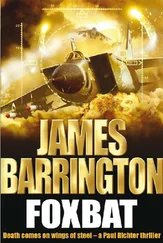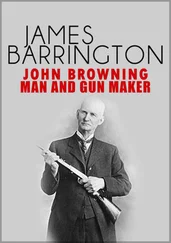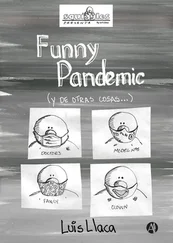Hanging suspended centrally amid what was left of the cabin, Aristides swung round in a complete circle, his eyes following the torch beam as he searched for anything of value or interest. He stopped the beam between two of the seat frames and focused it on a dark bulky shape squatting among the marine growth and debris covering the buckled floor of the cabin.
Aristides moved carefully towards this object, transferred the torch to his left hand and then extended his right arm. He gave the thing an experimental prod, and it moved slightly across the floor. Then he pulled it towards him and studied it more closely. Made of what appeared to be rotting leather, it looked like the kind of bag usually carried by doctors.
Putting the torch down carefully on the floor, and wedging it so that it illuminated the bag, Aristides pulled the heavy diving knife from its sheath strapped to his right calf. Holding the bag firmly with his left hand, he stabbed the knife into the side of it and then ripped it open. He tipped the bag onto its side and looked down in puzzlement as a cascade of corroded medical instruments tumbled out.
Aristides mentally shrugged and transferred his attention to the object that caught his attention immediately he had peered into the cabin. Unlike the leather bag, this was bouncing gently and improbably against the ceiling of the aircraft cabin, rather than lying on the floor. That meant that it was either naturally buoyant or, more likely, waterproof and airtight.
Picking up his torch again, Aristides reached for the object of his interest. Only then did he notice what appeared to be a small silvery tail dangling from it. As he peered more closely, he realized that this tail was actually a handcuff and immediately he recognized the bulky briefcase. The handcuff, which had presumably once been fastened around the wrist of one of the corpses below it, suggested that the case contained something valuable. Light, certainly, but valuable.
Professionally conscious of the passage of time, Aristides checked his chronometer and backed out of the aircraft’s cabin, now holding the briefcase in his left hand. He wanted to try to identify the aircraft itself, if he could, before having to surface.
Aristides secured the case to the line holding the lifting air bag, then swam back to the remains of the fuselage. He noticed what appeared to be part of a registration number visible near the rear end of the cabin, on the starboard side, and rubbed his gloved hand over it until he could make out the first letter. He couldn’t interpret any of the following digits until he’d scraped off some of the marine growth with his diving knife. That revealed three numbers which, together with the initial letter ‘N’ – Spiros instantly interpreted this as the Greek capital letter nu – he wrote on his waterproof pad. It looked to him as if there was another number, perhaps even two numbers, but it or they were indecipherable without shifting more growth.
Aristides wondered if the registration would be repeated on the other side of the cabin, and swam around to check. But when he spotted the jagged hole in the fuselage, he forgot all about checking numbers.
Southern Adriatic Sea
There was a brief silence on the frequency, then the squadron Senior Pilot, flying Tiger One, responded.
‘Tiger Two from Leader. Can you make it back to Mother?’
‘Negative,’ Richter snapped. ‘I need a long concrete runway to put this down on, not a steel postage stamp.’
‘Roger. Go to Guard and check in with Homer. Suggest you steer two four zero initially. I’ll accompany you. Snakes, Tiger Leader turning port and following Two. See you back on board.’
Richter was already in the turn onto south-west, as he switched frequency and selected the emergency code 7700 on his Secondary Surveillance Radar transponder. This setting generates an unmistakable, and absolutely unmissable, symbol on air traffic control radar displays.
‘Homer, this is Pan aircraft Tiger Two on Guard.’
On all warships, the Operations Room is a darkly colourful, and invariably noisy, environment. The illumination is derived from the reddish glow of radar screens, from small reading lights mounted on the consoles, from the myriad multi-coloured tell-tales and illuminated controls. The noise is caused by the constant chatter on Group Lines, intercoms and radio frequencies as specialist officers and ratings do their work.
The Operations Room on Five Deck is in every sense the nerve centre of the Invincible . Around the perimeter, information is gathered from the ship’s own sensors – principally radar and sonar – and from sensors mounted on other vessels and aircraft that transmit to the ship using secure data-links. Here the Air Picture Compilers track and identify all airborne radar contacts, while Surface and Sub-surface Compilers perform identical functions for their specific areas of responsibility.
The collated data provide the Warfare Officers, working at consoles in the centre of the room, with a complete picture of the air, surface and underwater environment around the warship, and enable them to act or react as the situation warrants. Surprisingly to the uninitiated, during any kind of action or alert the Captain will be found sitting on a swivel chair virtually in the centre of the Operations Room, and he will direct all aspects of the ship’s activities from there. No longer does he fight battles from the bridge, as was the norm during the Second World War. Today, instead, a seaman officer will take the bridge watch, to visually ensure the safety of the ship and to check that helm and engine revolution orders don’t run the vessel aground or into a collision.
Inside the Operations Room, close to the port-side door and beneath the printed title ‘Homer’, is a radar console manned by a specialist Air Traffic Control officer whose principal responsibility is the safe recovery of the ship’s organic air assets. The Military Emergency (Guard) frequency – 243.0 megahertz – is monitored whenever the ship is at sea, but is generally patched through an Ops Room speaker rather than listened to by Homer, who normally has more than enough traffic on his primary aircraft recovery frequency.
As soon as he heard the Pan call – ‘Pan’ being the lower of the two states of aircraft emergency, the more serious one being ‘Mayday’ – Lieutenant John Moore leaned back in his seat and looked up at the Radio Direction Finder display mounted above his console, simultaneously selected Guard on the frequency selector panel, and pressed the transmit key.
‘Pan aircraft Tiger Two, this is Homer. You’re loud and clear. State the nature of your emergency.’
‘Tiger Two has a rough-running engine and is requesting diversion ashore. Present heading is two four zero at Flight Level three five zero, squawking emergency. Tiger One is in company to relay as required.’
‘Roger, all copied, and you’re identified by your emergency squawk. You’re forty-two miles off the coast, and estimate you’ll be feet dry in about six minutes. Standby for airfield information.’
The moment the call had been heard on Guard, Homer’s radar console had become the focus of most of the activity in the Operations Room. His assistant had pulled out the relevant en route chart and the en route supplement covering Italy and was scanning the ERC, looking for the closest airfield that could take the Sea Harrier.
Moore’s next priority was to shed his other traffic so that he could concentrate on the emergency aircraft. In fact, he had nothing else on frequency at that moment, but he was expecting Snake One and Two to check in imminently. To pre-empt them, he called the Air Warfare Officer on Group Line Six.
‘AWO, Homer. Snakes should be on recovery soon, and I don’t want them on my frequency until we’ve sorted out Tiger Two. Can you raise the ASaC Sea King and get Snakes to call Director for recovery?’
Читать дальше












